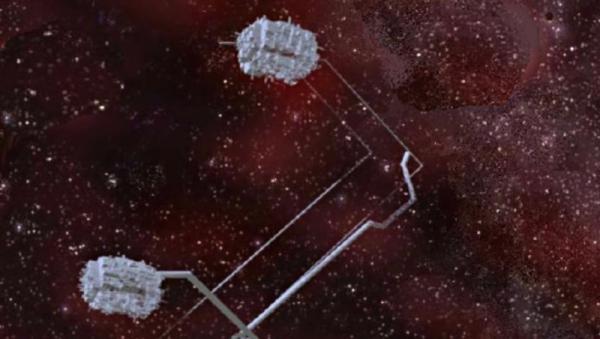BY LETTER
Mattercache
Technology > Application > Construction
Technology > Application > Manufacturing
Technology > Application > Materials Technology
Technology > Application > Manufacturing
Technology > Application > Materials Technology
 Image from Steve Bowers | |
| Two external mattercache containers attached to an interstellar ship | |
A mattercache usually consists of multiple containers of useful elements, with individual quantities and the exact mix determined either by the composition of the surrounding structure, predicted mission needs, or statistical data on usage patterns by the crew or inhabitants.
The actual design of a mattercache varies with the size of the system it is supporting and expected needs it may be called upon to support. Civilian mattercaches, or mattercaches operating in low risk environments are usually located in some central location convenient to the main onboard nanoforge or the habitat environmental control systems. Military or other high risk systems generally use a much more robust design consisting of multiple caches deployed strategically around the structure to maximize redundancy and minimize the distance feedstock must be deployed to reach an area needing repair or resource support.
Transapient systems, with their much greater use of swarm-based technologies, usually incorporate their mattercaches into the entire structure of their installations. Using a circulatory system similar to that found in organic lifeforms, they place millions of cell sized micro-caches in immediate proximity to every point and its local supply of construction and repair nanobots.
Related Articles
- Assembler
- Bioforge
- Municipal Feedstock Utilities
- Nanobot
- Nanofab/Nanofac Models
- Nanofacture - Text by Geoff Dale in Anders Sandberg's Transhuman Terminology
The fabrication of goods, especially but not necessarily macroscale items, using nanotechnology. Fabrication may occur on a large industrial scale, or from a small personal autofab unit. - Nanomachine
- Nanometallurgy - Text by M. Alan Kazlev
Using industrial and assembler nanotech to manufacture specific alloys or metallic configurations on the molecular scale. Although nanometals do not have the strength and lightness of diamondoid, they are excellent conductors of electric current, are malleable, do not catch fire as easily as carbon-based nano, and can easily be installed with shape-memory features.
Appears in Topics
Development Notes
Text by Todd Drashner
Initially published on 12 June 2010.
Initially published on 12 June 2010.






